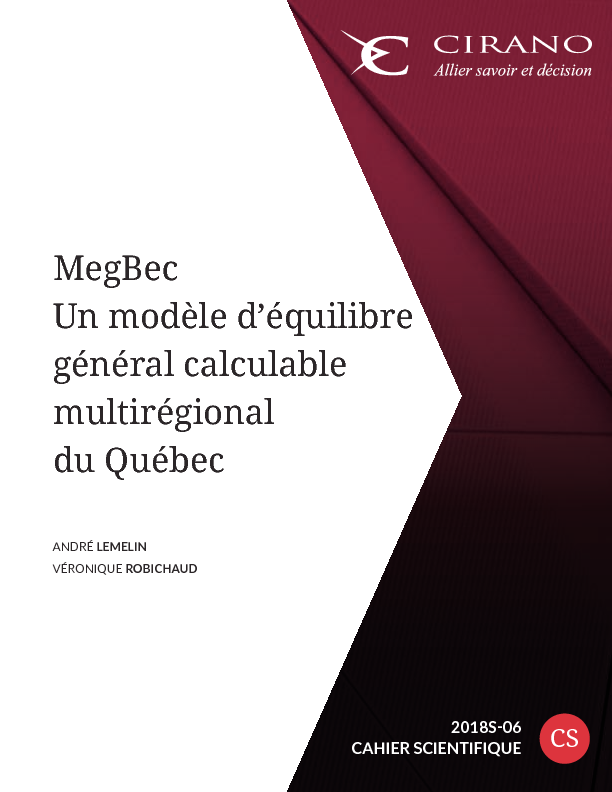MegBec - Un modèle d’équilibre général calculable multirégional du Québec
This document presents the MegBec multiregional model of Quebec, a recursive dynamic computable general equilibrium (CGE) model with 16 “analytic” regions. The model is based on a social accounting matrix (SAM) with 44 industries and 63 products. The first part of the document describes how the SAM was constructed. First, a SAM for Quebec as a whole was elaborated, using the 2011 Statistics Canada supply and use tables. Regional SAMs were built from that one by distributing values across regions following several key indicators, particularly the regional GDP estimates of the Institut de la statistique du Québec. The resulting discrepancy in each region between salaries received and paid is attributed to worker commuting; origin-destination flows were estimated using cross-entropy minimization from Statistics Canada’s 2011 Census commuting data. Discrepancies between regional absorption and production are attributed to interregional trade; bi-lateral flows are generated by simulation using a gravity model. Attraction factors – key parameters in the gravity model – are obtained by aggregating attraction factors constructed at the finer Municipalité Régionale de Comté (MRC) spatial scale, according to network distances, in minutes, between population-weighted centroids.
The second part of the document persents the model itself, whose specification is more or less standard for dynamic multiregional CGE models. In particular, trade between regions follows the Armington imperfect substituability hypothesis: supply is apportioned according to constant-elasticity-of-transformation (CET) functions, and demand according to constant-elasticity-of-substitution (CES) functions. Regional labor markets are characterized by the presence of unemployment, the rate of which depends on the level of wages, following a wage curve. Interregional worker commuting flows are logistic functions of regional wage rates. The document includes several appendices, one of which describes the reference scenario and the closure rules that are applied by default in the model.




